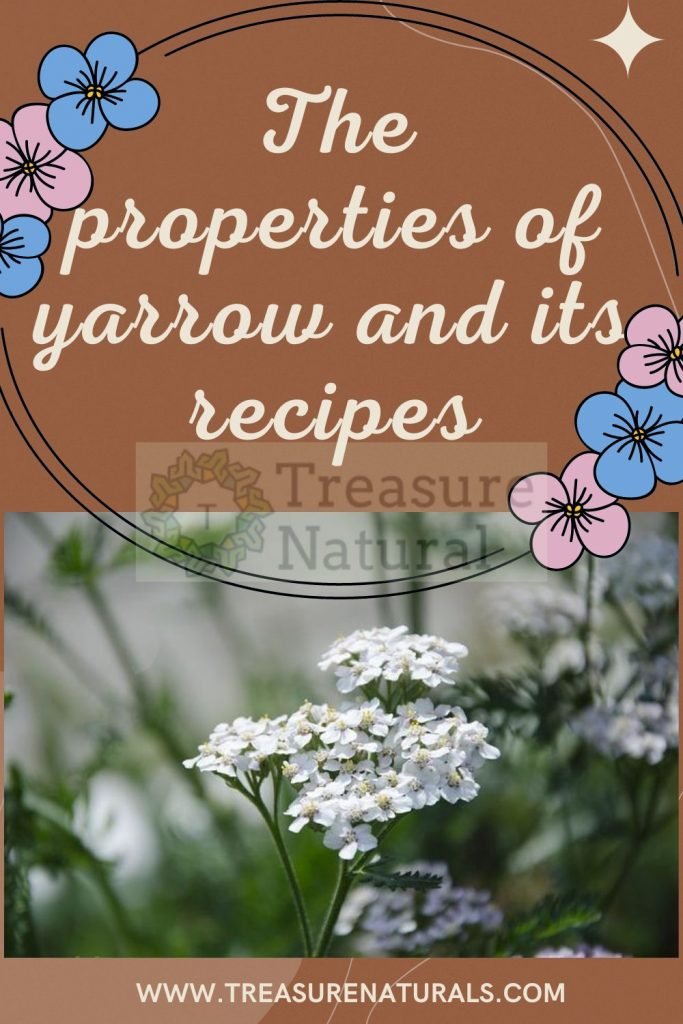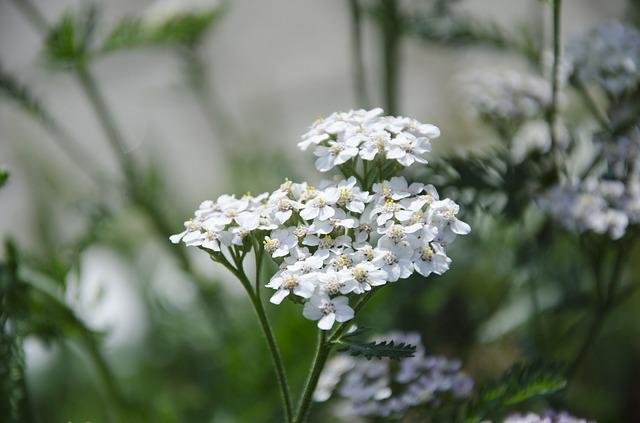
The yarrow is a plant with numerous properties that make it a real concentrate of well-being. Let’s discover its main features and uses in this dedicated guide.
Origin
Yarrow (A chillea millefolium) is a perennial herb of the Asteraceae family.
It is easy to meet it on the side of the road, see it peeking out of the ditches or growing luxuriantly in both wet and stony soils.
Description of the plant
The yarrow plant can grow up to 60-80cm in height, developing narrow, jagged foliage.
The flowers, actually flower heads (inflorescence formed by many small flowers), are white or pink and unite to form thick umbels. They give off a very good scent. The leaves are lanceolate and hairy.
We certainly met her while walking in the open air, especially between June and September, the flowering period.
It also grows in cold areas.
The history of the yarrow
The name it bears already indicates some historical properties, since it refers to the Greek hero Achilles who, it is said, treated the wounds of battle with a mixture of leaves and flowers of the plant.
It is also known under other names: “millefeuille”, “carpenters’ grass”, “cut grass” or “sanguinella”, all epithets that lead back to the innate and legendary vulnerary properties.
Yarrow: therapeutic properties
Science seems to corroborate the centuries-old beliefs about the plant as a cure for wounds, given the active ingredients contained both in the leaves and in the flowers.
Among the many, we report for example: azulene, flavonoids, tannins, caffeic acid and salicylic acid, sterols, achillein and chamazulene.
Let’s now see the main benefits produced by this plant, a truly precious natural remedy for our body.
- Natural anti-inflammatory and analgesic: thanks to azulene and salicylic acid, yarrow actively fights pain. In addition, by helping to relax the smooth muscles of the uterus, it is effective in the treatment of menstrual pain. Good results were also shown for rheumatic pains.
- Antispasmodic and anti-inflammatory properties: thanks to the chamazulene, also present in chamomile, it fights stomach cramps, but also hemorrhoids and anal fissures.
- Antiseptic: Tannins act as powerful antiseptics against infections.
- Astringent properties: excellent as a healing agent, yarrow also has an active action to fight acne.
- Mild sedative: the moderate dose of thujone present in the essential oil can also justify the traditional use to promote relaxation.
- Digestive properties: stretches and relaxes the digestive system, promoting proper digestion.
Contraindications
Like all natural remedies, even in this case there are some elements to take into consideration.
Its use is not recommended if you are being treated with anticoagulant drugs.
Not to underestimate any allergic reactions due to a hypersensitivity towards the plant.
Uses in the kitchen

A good infusion can be prepared with 30 g of dried flowers in 1 liter of water. By drinking about three cups a day, between meals, we can help difficult digestions!
The same infusion can also be used for washing in case of eczema or dermatitis.
The use of yarrow in the kitchen is certainly not new. It is used for the production of liqueurs and in the past it was used by the Swedes for the preparation of beer.
Yarrow liqueur: the recipe
Let’s now see an ancient recipe for preparing a liqueur with this plant.
Ingredients:
- 5 dl of alcohol at 95 ° for food
- 400 grams of brown sugar
- 6 dl of water
- 40 gr of yarrow flowers
- 10 gr of cinchona
- 40 gr of orange peel
- 10 gr of ginger
Preparation:
Macerate the yarrow flowers with the orange peel, ginger and cinchona in alcohol. Let it pass for up to 10 days. Then, using a colander, filter the alcohol.
For the syrup, put the brown sugar in a saucepan with the water and let it melt slowly.
Pour the mixture into the alcohol and mix. Filter again and close in an airtight bottle.
Leave to rest in a dark and cool room and serve at room temperature.






